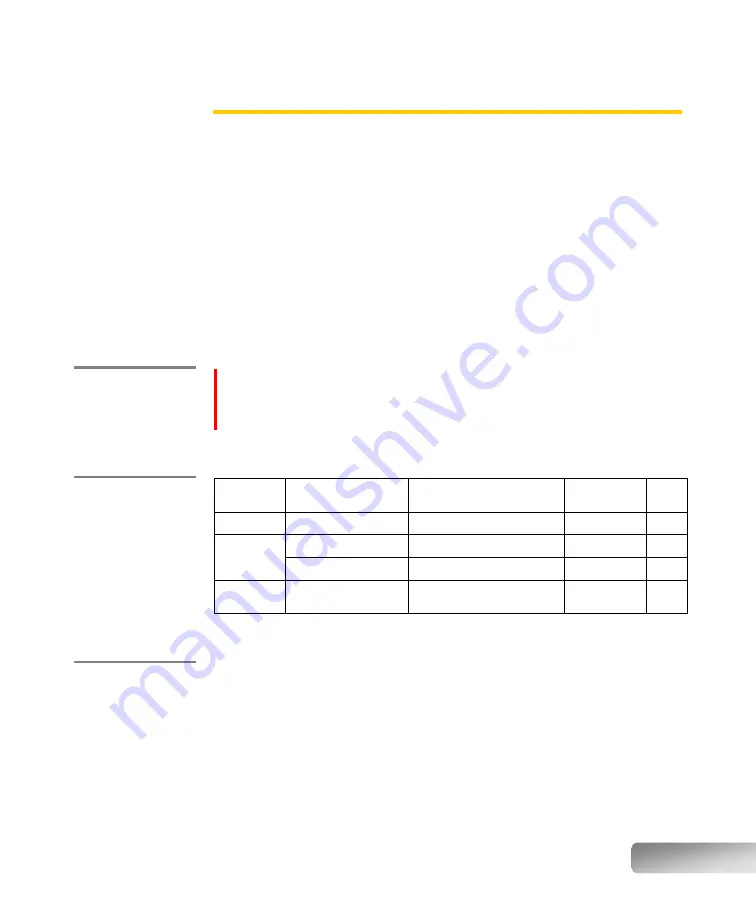
39
Periodic inspection
This instrument requires some regular checking, which is very important to keep
your instrument up and running.
Katanax knows that a broken instrument in a laboratory setting causes sample
back-up and unnecessary costs. That is why this manual comprises not only a
chapter (see page 43),
which guides the user in a step-by-step fashion through operations that
sometimes need to be performed on-site.
If unsure, do not hesitate to get in touch with a Katanax technician (see page 55,
Note that no modifications of the instrument, except those explicitly described and
permitted in this manual, are allowed. Any undue modification automatically
cancels the warranty and could endanger the user's life.
Warning
IMPORTANT
: Some of the procedures described in the following pages imply a
risk of death by electrocution; those procedures shall be executed only by
trained personnel.
Inspection
schedule table
Frequency
Checkpoint
Description
Action
(if problem
found)
Page
Every
fusion
Check for flux deposits
Cleaning
1 month
or
100 cycles
Visual integrity of
heating elements
Check elements integrity,
section and pitch regularity
Replace
Check for correct tightening
and oxidation
Re-tighten or
replace
3 months
or
300 cycles
Check junction
Replace
Flux spillages
This procedure describes an easy, yet crucial, step to be completed before each
fusion cycle. Flux spillages (residues), if left un-cleaned, can lead to a rapid
deterioration of key components of the fluxer.
1.
This visual inspection should be done every fusion cycle.
1.1
Look for vitrified, darker or colored spots on the ceramics or metal parts
that make up the mold and the crucible heaters.
1.2
In the case that a spillage has occurred on one or more parts of the
heaters, clean or replace immediately. Ceramic and metallic parts of the
Summary of Contents for K1 PRIME
Page 1: ...Automatic fluxer 1...
Page 2: ......
















































